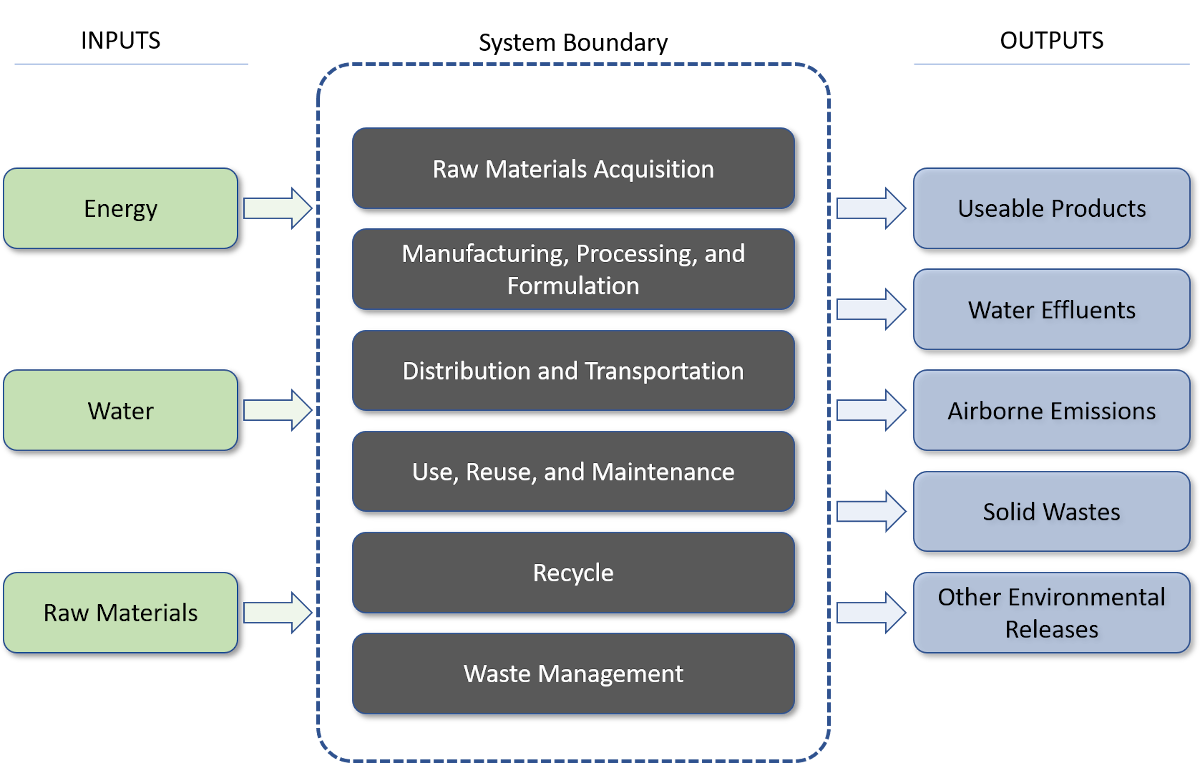Life Cycle Assessment
Life Cycle Assessment (LCA) aims to quantify the environmental impacts that arise from material inputs and outputs, such as energy use or air emissions, over a product’s entire life cycle to assist consumers in making decisions that will benefit the environment. LCA is typically a "cradle-to-grave" approach, which begins with the gathering of raw materials from the earth to create the product and ends at the point when all materials are returned to the earth.
The goal of LCA is to:
- Quantify or otherwise characterize all the inputs and outputs over a product’s life cycle
- Specify the potential environmental impacts of these material flows
- Consider alternative approaches that change those impacts for the better
Figure 1: Inputs and outputs over a product’s life cycle
It is important to take into consideration the entire life cycle of materials, systems, and the whole building when making design or purchasing decisions.
Benefits of LCA |
|
|---|---|
| Provide comprehensive view of the environmental impacts | See more than just the “use” phase |
| Quantify environmental effects such as overall energy consumption or air emissions | Recognize inefficiencies or significant changes across life cycle phases |
| Allow comparison of alternatives "apples to apples" | Reduce overall environmental impact and costs (as in an economic input-output LCA |
Challenges with LCA |
|
|---|---|
| Defining LCA boundaries and scope | Where do I want to draw the line? What attributes am I interested in comparing against one another? How far down the chain do I want to identify and quantify these material flows, and is that data even available? |
| Data availability | Is data available to quantify material inputs and outputs at all stages of my defined scope? Is this data from a reliable source (e.g., manufacturer)? |
| Quantifying environmental impacts | How can these material flows be quantified into environmental categories (e.g., global warming)? |
| Weighting impacts across stakeholders | What environmental category are we most concerned about (e.g., global warming, energy use, acidification) and how does it compare to other environmental attributes? |


